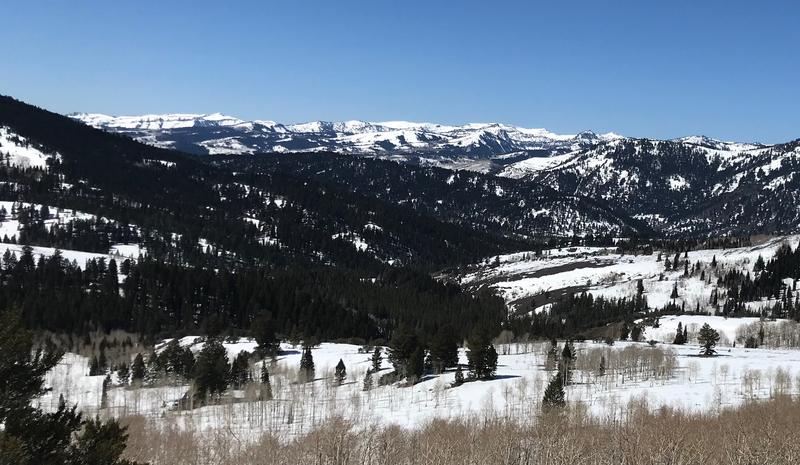The 8400' Tony Grove Snotel reports 36°F this morning, and there is 54 inches of total snow at the site, containing 68% of normal SWE. North northwest winds are currently blowing around 11 mph at the 9700' CSI Logan Peak weather station with gusts in the 20's.
Spring conditions exist in the mountains right now with easy traveling and warm temperatures. We found excellent corn snow yesterday but today, the warmer temperatures will shorten your time frame for supportable snow.
- It will be sunny again in the mountains today, with high temperatures at 8500' around 53°F. Winds blowing 7-16 mph will switch from the southeast to the southwest by the afternoon.
- It will be partly cloudy tonight with low temperatures around 25°F and 16 to 18 mph southwest winds.
- The weather changes Saturday - we'll see partly sunny skies, a high temperature around 38°F, northwest winds blowing 15 to 25 mph, and a chance for snow.
- Sunday will be colder with temperatures in the high 20's F and west winds blowing 18 to 23 mph with gusts as high as 36 mph. Less than an inch accumulation is expected.
- The best chance for significant snowfall is Monday evening into Tuesday.
The high elevation slopes in the Bear River Range still have a thick blanket of snow - it's getting to them that's the problem. Trailheads are melting out making for a longer ride on pavement or dirt before hitting snow.
No new avalanches were reported in the Logan Zone since the rapid warmup at the end of March, which caused many natural wet loose and wet slab avalanches in the Wellsville and Bear River mountain ranges.
Check out all the recent backcountry observations and avalanche reports from across Utah
HERE.










